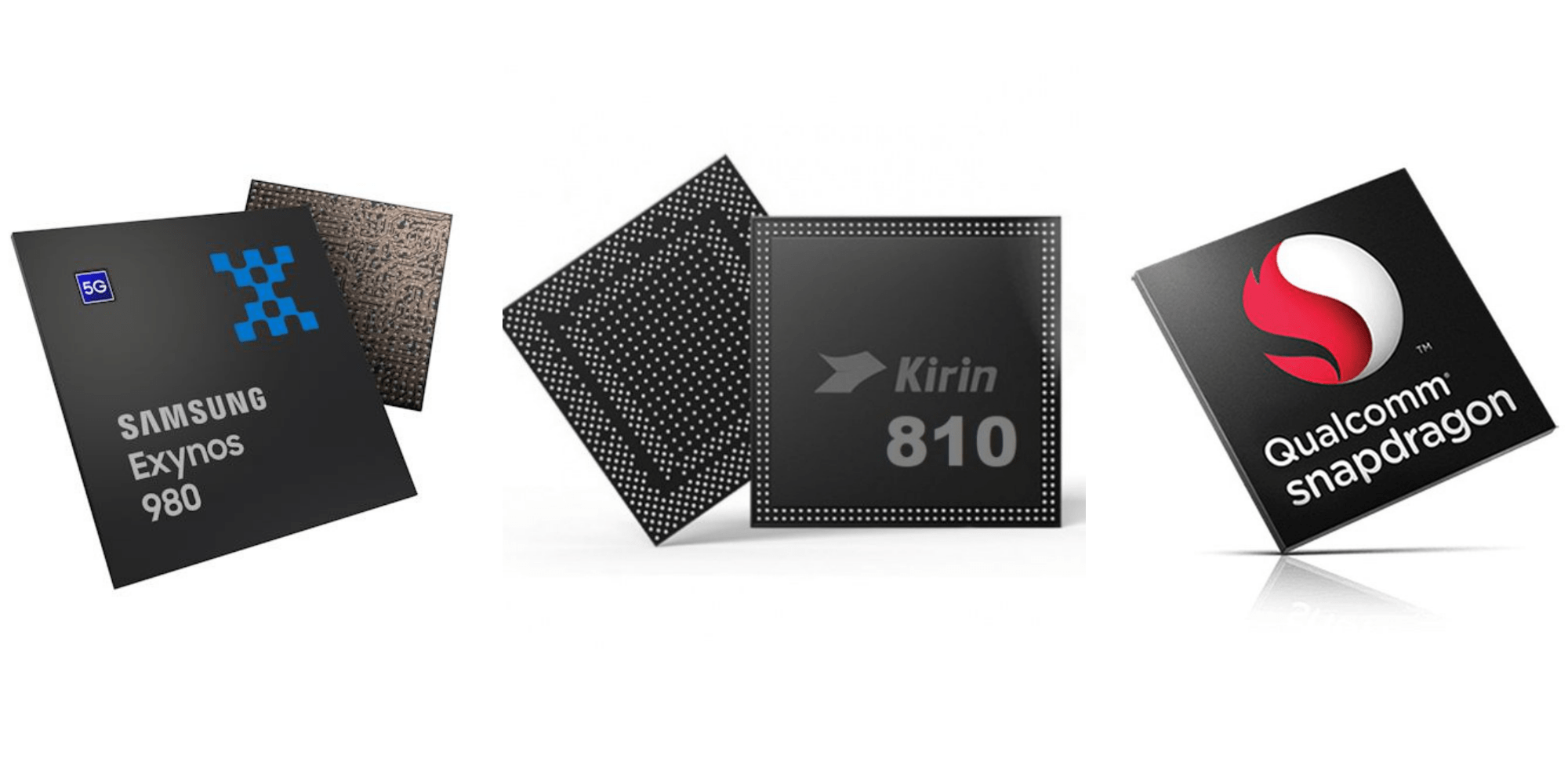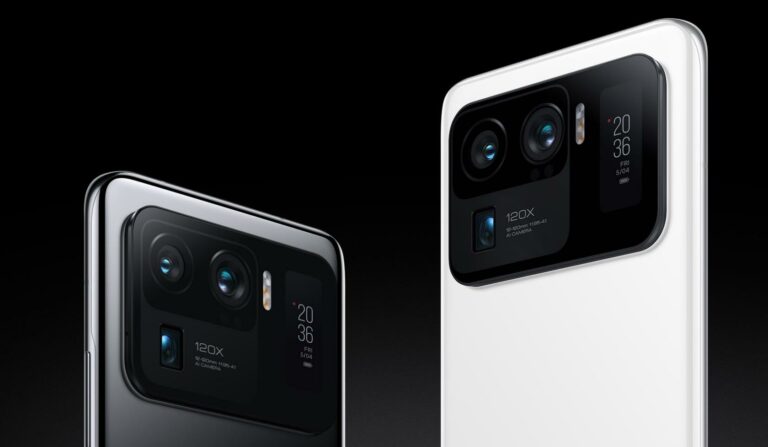Any links to online stores should be assumed to be affiliates. The company or PR agency provides all or most review samples. They have no control over my content, and I provide my honest opinion.
With the launch of the Samsung Exynos 980 5G, Samsung set a new standard for upper mid-range chipsets.
MediaTek, HiSilicon and Qualcomm have all launched their latest upper mid-range chips recently, which promise near-flagship performance but at a more attractive price point.
During IFA we had multiple announcements with new chipsets with integrated 5G modems. Huawei/HiSilicon announced their flagship Kirin 990 while both Samsung and Qualcomm have decided to integrate the modem on the tier below this. This is likely due to Qualcomm and Samsung not launching their flagship SoC until the end of the year/start of next.
With the Qualcomm announcement, they just stated that the Snapdragon 7 Series and 6 Series will be updated to an integrated chipset, so, for now, we know nothing else about it.
CPU
With the currently available chips, each one has a similar design, using 2 Cortex-A76 cores combined with 6 lower powered Cortex-A55 cores.
However, the new Samsung will be the first commercially available chipset to feature the latest Coretex A77 CPU, ousting Huawei as they stuck with A76 for their flagship.
Technically Mediatek announced the first A77 based chipset, but there is no specific details about this, nor any news when it will be released. I think they announced it just so they could say they were first.
For the remaining 6 cores, Samsung keeps the same A55 similar to the other options on the market.
How the A77 will compare to the A76 is another question. Logically it should offer a significant improvement.
Fabrication Process
Power efficiency will be interesting, Samsung still uses the 8nm process, while the Kirin 810 is using 7nm. Samsung recently started using the 7nm EUV for its Exynos 9825 but I would assume this costs more to use.
The Helio G90T which has come out with some fantastic benchmarks is made on the 12nm FinFET fabrication process, which should make it quite power hungry compared to its competitors.
GPU
Comparing the GPU is a little harder, the Exynos 980 uses the Mali G76 with 5 cores, its closest comparison is the Helio G90T which uses the same G76 but with just 4 cores. The Mali G76 is based on the Bifrost 3rd gen architecture and was launched in the last half of last year, and offers 48.96 FP32 GFLOPS (per core)
The Kirin uses a Mali G52 with 6 cores, this is based on the Bifrost 2nd gen architecture and was launched at the start of 2018. Depending on the configuration this offers 27.2 @ 850 MHz per core (2 EU) or 40.8 @ 850 MHz per core (3 EU).
AI
Another area that is hard to compare is the AI functionality. Companies tend to use ambiguous terms to refer to their own AI tech. All we have from Samsung is that a powerful neural processing unit (NPU) and digital signal processor (DSP) are built into the Exynos 980 to deliver new levels of on-device artificial intelligence.
Benchmarks will provide the best comparison, there are obviously none yet for the Exynos 980 but it will be interesting to see how this compared to the Kirin 810 when it launches.
The HiSilicon Kirin 810 has been tested on Ai Benchmark and it comfortably beats the flagship Snapdragon 855 (though a little behind the SD855+).
The Snapdrapdragon 730 and Helio G90T score less than half of the Kirin 810.
Whether or not AI performance is as important as CPU or GPU performance is another question.

Other Features
Samsung will continue to be at the forefront of Wi-Fi for mobile, they were the first to launch Wi-Fi 6 on the Galaxy S10 and the Samsung Exynos 980 will also have this integrated.
Cost
While the Samsung Exynos 980 5G may be aimed at the mid-range market, it is likely to come at a premium cost compared to the none 5G chipsets.
We have no idea how much the phones based on this will cost, obviously, it will be lower than the Samsung Galaxy S10 5G RRP which is north of £1k.
The current Galaxy A80 costs £579 which is already in flagship pricing territory (though it does have an SD855), and I wouldn’t be surprised if a 5G phone will cost more than this.
Comparison Table
| Exynos 980 | Helio G90T | SD730 | Kirin 810 | Exynos 9610 | |
|---|---|---|---|---|---|
| Manufacturing Process | 8nm LPP | 12nm FinFET | 8nm | 7nm | 10nm LPP |
| CPU | 2x Cortex-A77 @ 2.2GHz 6x Cortex-A55 @ 1.8GHz | 2x Cortex A76 @ 2.05GHz 6x Cortex A55 @ 2.0GHz | 2x Kryo 470 (CA76) @ 2.2GHz 6x Kryo 470 (CA55) @ 1.8GHz | 2x Cortex-A76 @ 2.23 GHz 6x Cortex-A55 @ 1.88 GHz | 2x Cortex-A73 @ 2.3GHz + 4x Cortex-A53 @ 1.7GHz |
| GPU | Mali G76 MP5 | Mali G76 MP4 @ 800MHz | Adreno 618 | Mali G52MP6 @ 820MHz | Mali G72 MP3 |
| RAM | LPDDR4x 2133MHz | LPDDR4x up to 10GB, 2133MHz | 2x 16-bit @ 1866MHz LPDDR4X 14.9GB/s 1MB system cache | LPDDR4X @ 2133MHz | LPDDR4X @ 2133MHz |
| Modem | Shannon Integrated 5G (LTE Category 16/18) DL = 1000 Mbps 5x20MHz CA, 256-QAM UL = 200 Mbps 2x20MHz CA, 256-QAM (5G NR Sub-6) DL = 2550 Mbps UL = 1280 Mbps | Integrated 4G LTE D/L Speed: 600 Mbps U/L Speed: 150 Mbps | Snapdragon X15 D/L Speed: 800 Mbps U/L Speed: 150 Mbps | Integrated 4G LTE D/L Speed: 1.4 Mbps U/L Speed: 200 Mbps | Shannon Integrated (LTE Category 13/13) DL = 600 Mbps 3x20MHz CA, 256-QAM UL = 150 Mbps 2x20MHz CA, 64-QAM |
| AI | Integrated | 2x APU +1TOPs total perf | Hexagon 688 | Dual NPU | N/A |
I am James, a UK-based tech enthusiast and the Editor and Owner of Mighty Gadget, which I’ve proudly run since 2007. Passionate about all things technology, my expertise spans from computers and networking to mobile, wearables, and smart home devices.
As a fitness fanatic who loves running and cycling, I also have a keen interest in fitness-related technology, and I take every opportunity to cover this niche on my blog. My diverse interests allow me to bring a unique perspective to tech blogging, merging lifestyle, fitness, and the latest tech trends.
In my academic pursuits, I earned a BSc in Information Systems Design from UCLAN, before advancing my learning with a Master’s Degree in Computing. This advanced study also included Cisco CCNA accreditation, further demonstrating my commitment to understanding and staying ahead of the technology curve.
I’m proud to share that Vuelio has consistently ranked Mighty Gadget as one of the top technology blogs in the UK. With my dedication to technology and drive to share my insights, I aim to continue providing my readers with engaging and informative content.







